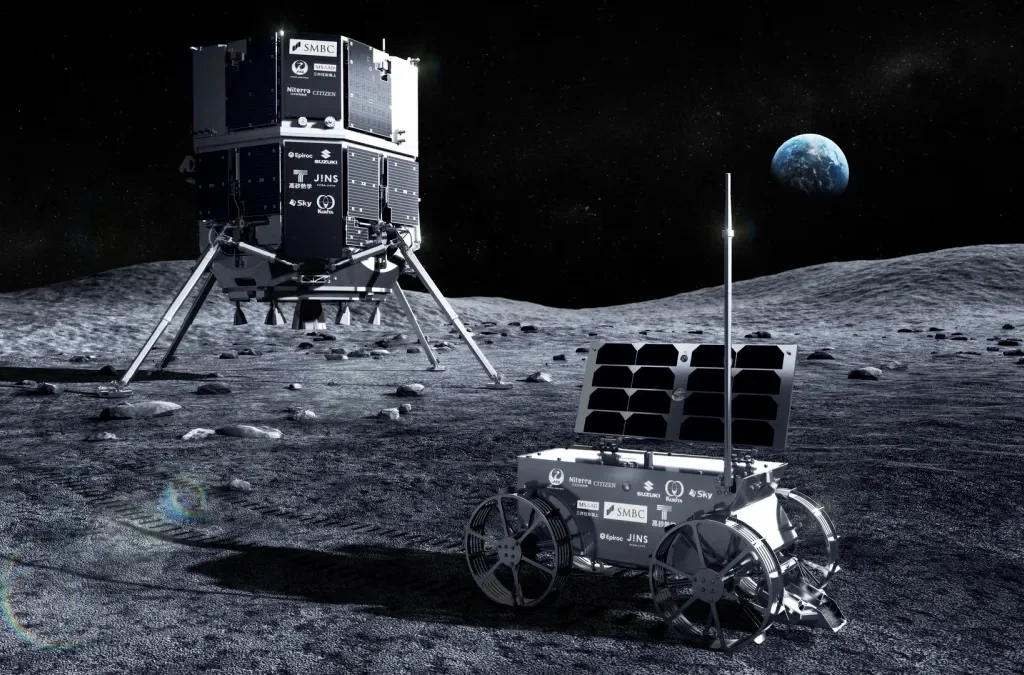ispace's upcoming lunar lander, Resilience, carries a range of payloads from Japanese companies and a Taiwanese university, including a water electrolyzer, food production experiments, and a deep space radiation study. Among the commercial payloads is a “commemorative alloy plate” from Bandai Namco Research Inc., the research division of the Japanese entertainment company Bandai Namco, with a combined contract value of $16 million, according to ispace's financial filings.
In addition, Resilience carries Tenacious, a small rover developed by ispace's European subsidiary. Tenacious is equipped with cameras and a shovel to collect lunar regolith, a sample of which will be sold to NASA for $5,000 under a 2020 agreement aimed at establishing legal precedent for space resource rights. The rover also carries an art project called Moonhouse, created by Swedish artist Mikael Genberg and his team. Moonhouse is a miniature model of a typical Swedish house, measuring 12 by 10 by 8 centimeters and weighing 100 grams. The rover is expected to deploy the model onto the lunar surface, ideally positioning it to be photographed with Earth in the background.
“All culture boils down to one thing, that is that we try to communicate and recommunicate what it is to be human, what life is all about,” Genberg said during a June 4 briefing. He noted that placing a red Swedish house on the moon offers a novel perspective on humanity and life's meaning. The Moonhouse was 3D-printed in aluminum with customized space-rated red paint, pushing technological boundaries as its producers initially doubted it could be made as designed. After extensive testing in a simulated lunar environment at the European Space Agency, the rover will release the model by firing a bolt that drops it gently eight centimeters to the surface.
Looking ahead, ispace is developing two more lunar landers. The U.S. subsidiary is building Apex 1.0 for NASA's Commercial Lunar Payload Services (CLPS) Mission 3, now scheduled for launch in 2027 following engine changes. In Japan, ispace is designing the Series 3 lander for Mission 4, also targeted for 2027, backed by $80 million in funding from the Japanese government. This mission will also deploy a satellite funded by JAXA's Space Strategy Fund to search for water ice and metals beneath the lunar surface, with ispace playing a “core role” in its development.
In a May earnings presentation, ispace outlined a roadmap for additional missions in 2028 and 2029, dependent on securing more CLPS task orders. The company announced a collaboration with Redwire, a CLPS contractor, to pursue future NASA lunar contracts.
For the fiscal year ending March 2025, ispace reported net sales of 4.74 billion yen ($32.9 million) and a net loss of 11.9 billion yen. It forecasts 6.2 billion yen in net sales and an 8.3 billion yen loss for the current fiscal year, financed through loans including $35 million from Mizuho Bank and $70 million from Sumitomo Mitsui Banking Corporation announced in May.
“Our goal is to build the cislunar economy, one in which the moon and Earth are economically and socially connected,” ispace CEO Takeshi Hakamada said June 4, referring to the upcoming Resilience landing. “We view the success of the lunar landing as merely a steppingstone toward that goal. We believe these missions open the door to outer space for more people.”
